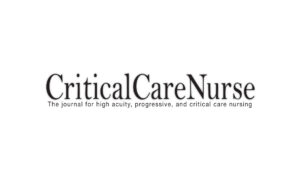Nurse-led bra initiative eliminates post-surgical chest wounds in female heart patients
Editor's Note
A well-fitted bra dramatically cut post-sternotomy wound rates to zero at a Denver hospital, showing how nurse-driven innovation can improve outcomes and reduce costs, Critical Care Nurse May 28 reports. In the article, “The Bra Project: Preventing Wounds in Women After Sternotomy,” appearing in the journal’s June 2025 issue, nurses at Intermountain Health’s Saint Joseph Hospital detail how they identified and addressed a pattern of complications in female cardiac surgery patients, particularly those with larger breasts.
Prior to the intervention, 6.4% of these patients developed pressure injuries or sternal dehiscence—complications that led to 274 extra hospital days and over $751,000 in additional costs in just 1 year. Per the article, nurses recognized the standard surgical bra, in use for over a decade, often fit poorly, absorbed moisture, and lacked flexibility to accommodate swelling—conditions that led to discomfort, nonadherence, and skin damage. In response, the team selected a soft, stretchable, and moisture-resistant bra with a hook-and-loop front closure for emergency access. It was available in a wide range of sizes and comparable in cost to the previous product.
The staff at Intermountain measured chest circumference preoperatively and applied the bra in the OR immediately after the procedure concluded. Patients were instructed to wear it for 20 to 24 hours a day for 6 weeks. The updated protocol also included hands-on staff training, sizing guides, and a checklist placed with each patient’s chart to guide proper fit and use.
In the first 82 patients who received the new bra, the incidence of sternal wounds and pressure injuries dropped to 0%. Nurses noted not only improved clinical outcomes, but also positive feedback from patients regarding comfort and fit—some even requested a second bra at discharge for continued use at home. This initiative highlights the role of bedside nurses in identifying preventable risks and implementing evidence-based changes. In addressing a previously overlooked contributor to poor surgical recovery, the “Bra Project” offers a scalable, low-cost model for wound prevention in female cardiac surgery patients.
Read More >>

 Free Daily News
Free Daily News